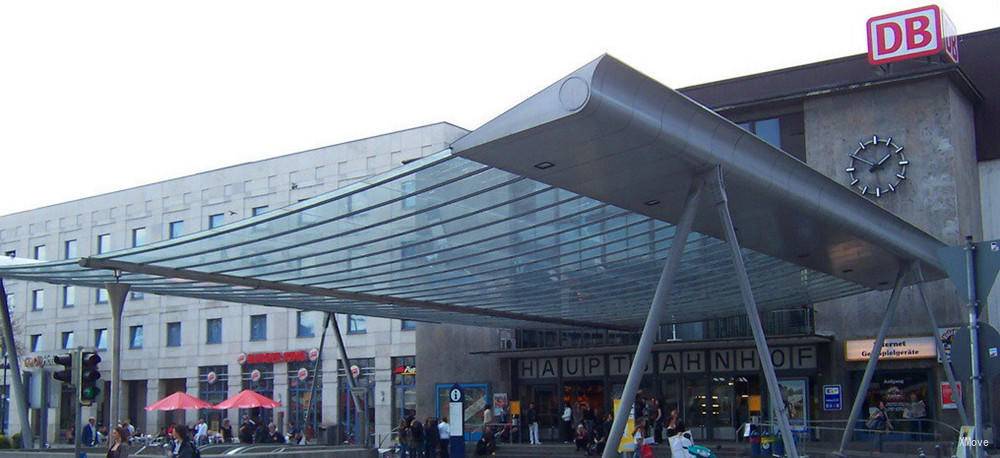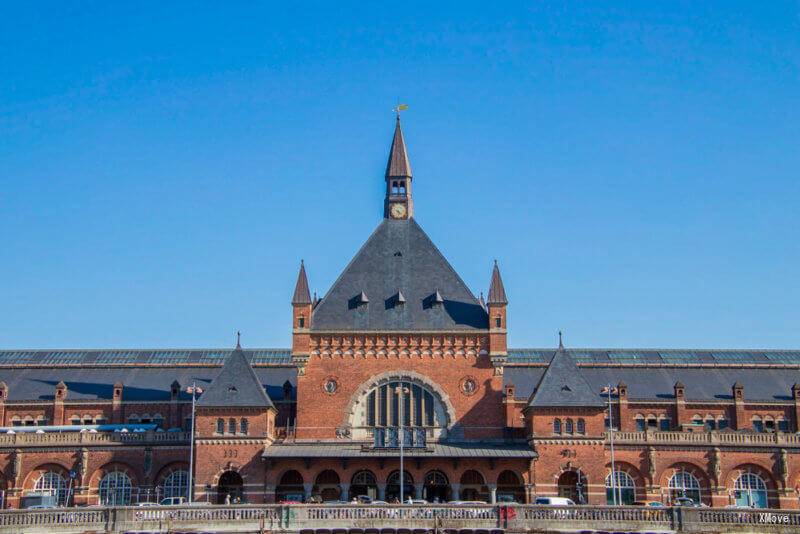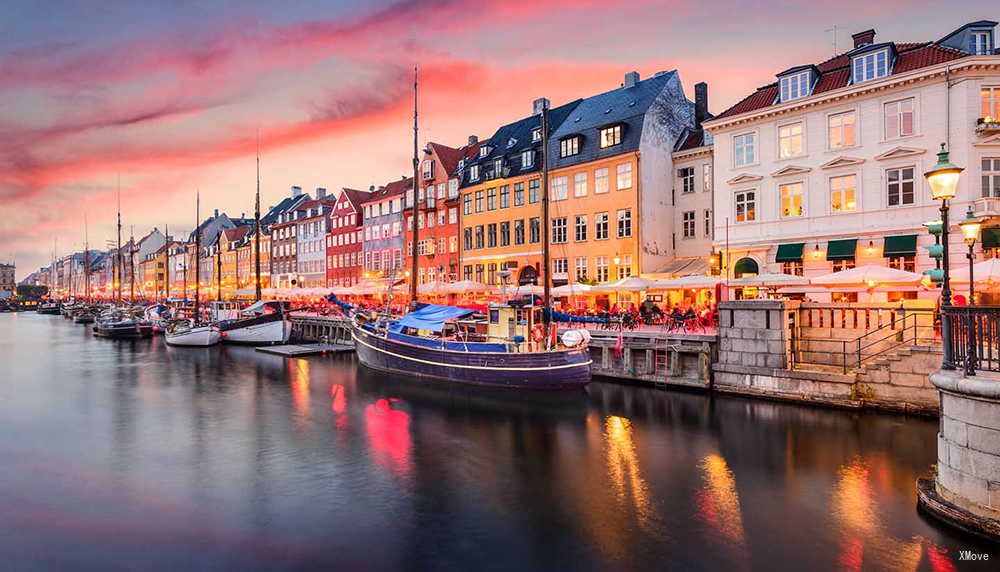Ulm Central to Köbenhavn H: Trains, Buses, Fares, Today's Connections, Routes, Duration, Types of Trains, Station Guides, Tips, Journey
Germany Train Tickets
Scan QR code, download G2Rail App to see Ulm Central's more live update, station guide, plan and photos



Train schedule Ulm Central(Ulm Hbf) to Köbenhavn H
Popular train routes departing from Ulm Central(Ulm Hbf)
* Karlsruhe Central(Karlsruhe Hbf)
* Fuessen(Füssen)
* Leutkirch
* Bad Neustadt(Saale)
* Köbenhavn H
* Guenzburg(Günzburg)
* Schaffhausen, Bahnhof
Popular train routes arriving in Ulm Central(Ulm Hbf)
* Münster (Westf) Hbf(Münster(Westf)Hbf)
* Pariisi(Paris)
* Salzburgin Päärautatieasema(Salzburg Hbf)
* Titisee
* Basel Sbb
* Vilseck
* Wien
Popular train routes departing from Köbenhavn H
* Höganäs
* Duesseldorf Central(Düsseldorf Hbf)
* Stuttgart Central(Stuttgart Hbf)
* Rotterdam Centraal
* Essen Central(Essen Hbf)
* Jena Paradies Central(Jena Paradies)
* Husum(S) Station(Husum Station)
Popular train routes arriving in Köbenhavn H
* 베를린(Berlin)
* 뉘른베르크(Nürnberg Hbf)
* 비스 마르(Wismar)
* 예테보리 중앙역(Göteborg C)
* 부퍼탈(Wuppertal Hbf)
* 함부르크(Hamburg Hbf)
* 드레스덴 중앙역(Dresden Hbf)

Ulm Central
Ulm Central Station is the main railway station of Ulm, on the Danube River, on the border of Baden-Württemberg in Germany and the Danube-Ille region (Danube-Ille region) in Bavaria.
Ulm Central Station has twelve platforms, five of which are terminal platforms and form a major railway hub. The city's other stations are located in Ulm-Söflingen in the west and Ulm Ost (east) in the east and Ulm-Donautal in the industrial area. The Ulm marshalling station is located in the western part of the city. Neu-Ulm (New Ulm) is located opposite the Danube in Bavaria and has stations in Neu-Ulm, Finningerstraße and Gerlenhofen.
Ulm is located on the railway line from Stuttgart to Munich, the Intercity-Express train, and part of the European Magistrale (main line) from Paris to Budapest. European cities such as Amsterdam, Budapest, Paris and Linz can be reached without a transfer service. About 29,000 passengers use the station every day. [3] There are approximately 335 trains operated by Deutsche Bahn and Agilis, 75 long-distance trains and 260 regional trains per day. The station is serviced by local trains and is coordinated by the Donau-Iller-Nahverkehrsverbund (Danube-Ille Regional Transport Association, DING).
Ulm Central - Station Guide | Departures and Arrivals | Popular RoutesKöbenhavn H
Located in the city centre, all trains pass through this station or start here. There are many cities in Denmark that can be reached by trains. In addition to the Danish cities, there are also famous cities such as Malmö in Sweden, Hamburg in Germany and Amsterdam in the Netherlands. All light rail express trains (except F line) all pass this site
There are many trains from Copenhagen to various cities in Denmark. There are trains to all parts of the country, including 12 minutes to the airport, and some important attractions, City Hall, pedestrian street, round tower and port are all within walking distance. Going to the little mermaid is relatively far away.
The international route is Copenhagen → Hamburg, passing through Lübeck. Or the night train departs from Copenhagen to Hamburg, Amsterdam, Frankfurt, Dresden, Prague and other places, or express trains to the Nordic cities of Gatpo Stockholm.
Köbenhavn H - Station Guide | Departures and Arrivals | Popular Routes

Ulm (German pronunciation: [ˈʔʊlm] ) is a city in the federal German state of Baden-Württemberg, situated on the River Danube. The city, whose population is estimated at almost 120,000 (2015), forms an urban district of its own (German: Stadtkreis) and is the administrative seat of the Alb-Donau district. Founded around 850, Ulm is rich in history and traditions as a former free imperial city (German: freie Reichsstadt). Today, it is an economic centre due to its varied industries, and it is the seat of the University of Ulm. Internationally, Ulm is primarily known for having the church with the tallest steeple in the world (161.53 m or 529.95 ft), the Gothic minster (Ulm Minster, German: Ulmer Münster), and as the birthplace of Albert Einstein.
Ulm - Guide, Attractions, Tours, Sightseeings | Train from/to Ulm | Popular RoutesCopenhagen (Danish: København [kʰøpm̩ˈhaʊ̯ˀn] ) is the capital and most populous city of Denmark. As of July 2018, the city has a population of 777,218 (616,098 in Copenhagen Municipality, 103,914 in Frederiksberg Municipality, 43,005 in Tårnby Municipality, and 14,201 in Dragør Municipality). It forms the core of the wider urban area of Copenhagen (population 1,320,629) and the Copenhagen metropolitan area (population 2,057,737). Copenhagen is situated on the eastern coast of the island of Zealand; another small portion of the city is located on Amager, and it is separated from Malmö, Sweden, by the strait of Øresund. The Øresund Bridge connects the two cities by rail and road. Originally a Viking fishing village established in the 10th century in the vicinity of what is now Gammel Strand, Copenhagen became the capital of Denmark in the early 15th century. Beginning in the 17th century it consolidated its position as a regional centre of power with its institutions, defences and armed forces. After a plague outbreak and fire in the 18th century, the city underwent a period of redevelopment. This included construction of the prestigious district of Frederiksstaden and founding of such cultural institutions as the Royal Theatre and the Royal Academy of Fine Arts. After further disasters in the early 19th century when Horatio Nelson attacked the Dano-Norwegian fleet and bombarded the city, rebuilding during the Danish Golden Age brought a Neoclassical look to Copenhagen's architecture. Later, following the Second World War, the Finger Plan fostered the development of housing and businesses along the five urban railway routes stretching out from the city centre. Since the turn of the 21st century, Copenhagen has seen strong urban and cultural development, facilitated by investment in its institutions and infrastructure. The city is the cultural, economic and governmental centre of Denmark; it is one of the major financial centres of Northern Europe with the Copenhagen Stock Exchange. Copenhagen's economy has seen rapid developments in the service sector, especially through initiatives in information technology, pharmaceuticals and clean technology. Since the completion of the Øresund Bridge, Copenhagen has become increasingly integrated with the Swedish province of Scania and its largest city, Malmö, forming the Øresund Region. With a number of bridges connecting the various districts, the cityscape is characterised by parks, promenades and waterfronts. Copenhagen's landmarks such as Tivoli Gardens, The Little Mermaid statue, the Amalienborg and Christiansborg palaces, Rosenborg Castle Gardens, Frederik's Church, and many museums, restaurants and nightclubs are significant tourist attractions. The largest lake of Denmark, Arresø, lies around 27 miles (43 kilometers) northwest of the City Hall Square. Copenhagen is home to the University of Copenhagen, the Technical University of Denmark, Copenhagen Business School and the IT University of Copenhagen. The University of Copenhagen, founded in 1479, is the oldest university in Denmark. Copenhagen is home to the FC København and Brøndby football clubs. The annual Copenhagen Marathon was established in 1980. Copenhagen is one of the most bicycle-friendly cities in the world. The Copenhagen Metro launched in 2002 serves central Copenhagen. The Copenhagen Metro is scheduled to expand radically with the opening of the City-ring line during fall 2019, the new line will connect all inner boroughs of the city by metro, including The Central Station, and will open up 17 new stations for Copenhageners. The new metro line is a part of the city's strategy to transform mobility towards sustainable modes of transport such as public transport and cycling as opposed to automobility. Additionally the Copenhagen S-train, the Lokaltog (private railway) and the Coast Line network serves and connects central Copenhagen to outlying boroughs. The Copenhagen-Ringsted Line will relieve traffic congestion in the corridor between Roskilde and Copenhagen. Serving roughly two million passengers a month, Copenhagen Airport, Kastrup, is the busiest airport in the Nordic countries.
Copenhagen - Guide, Attractions, Tours, Sightseeings | Train from/to Copenhagen | Popular Routes
Germany Train Tickets
Scan QR code, download G2Rail App to see Ulm Central's more live update, station guide, plan and photos



Hot Journeys
* Dusseldorf(Düsseldorf) -> Frankfurt Airport(Frankfurt Flughafen)
* London(London) -> Edinburg
* Manarola -> La Spezia(La Spezia)
* Paris -> Marseilles(Marseille)
* Rome(Roma) -> Venice(Venezia)
* Milan -> Venice(Venezia)
* Kaohsiung(高雄) -> Taipei(台北)
* Milan -> Venice(Venezia)
* Brig -> Andermatt
* Milan -> Florence
* Paris -> Venice(Venezia)
* Frankfurt -> Paris
* Frankfurt -> Berlin(Berlin)
* Pisa -> Florence
* Turin(Torino) -> Milan
* Warsaw(Warszawa) -> Berlin(Berlin)
* Frankfurt -> Cologne(Köln)
* Stuttgart -> Frankfurt Airport(Frankfurt Flughafen)
